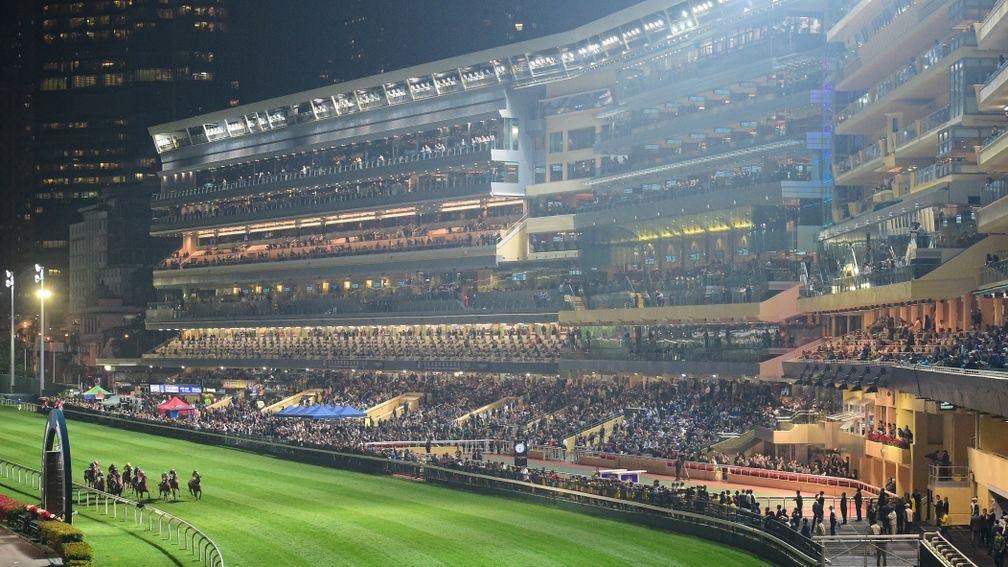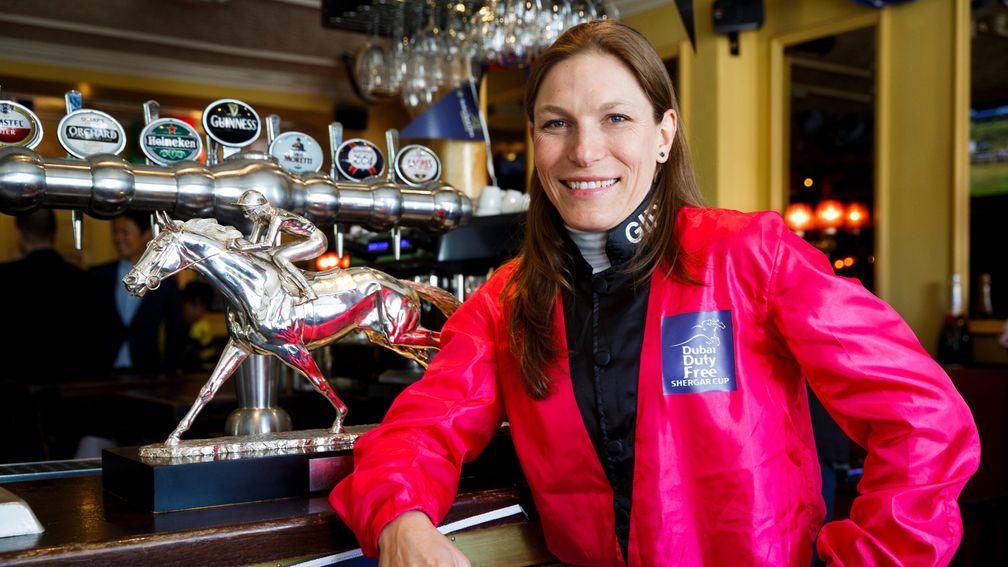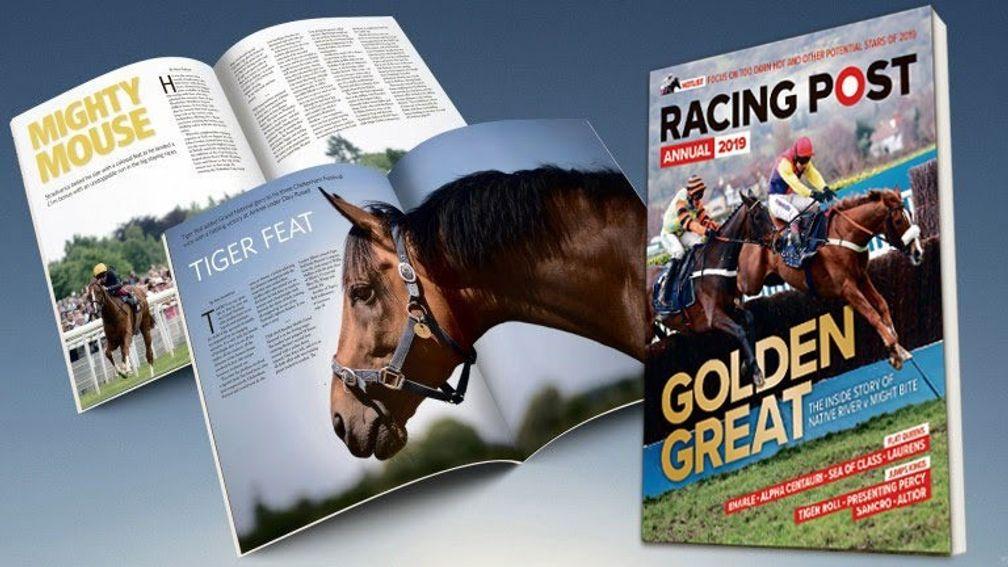From A Shin Hikari to Zac Purton: Hong Kong racing in a nutshell

A is for A Shin Hikari, current Hong Kong Cup track record holder with a winning time of 2.00.60.
B is for betting pools. The Hong Kong Jockey Club runs the region's racing and football pools, alongside the Mark Six Lottery. In 2017-18 horseracing contributed HK$122.8 billion (£12.3bn) in turnover. Unclaimed winnings of HK$60m (£6m) were returned to the pool. That's a in central London with change to spare or two .
C is for Cup, as in Hong Kong Cup, the highlight of the Longines Hong Kong International race meeting. Run over 1m2f, it is worth HK$28 million (£2.8m) – Frankie Dettori holds the records for most wins, scoring on Fantastic Light (2000), Falbrav (2003) and Ramonti (2007).
D is for Douglas Whyte, the most successful jockey in Hong Kong's racing history with 13 consecutive championships between 2000-01 and 2012-13.
E is for enormous bridge. The recently-opened Hong Kong–Zhuhai–Macau Bridge, a 34-mile system of bridges and tunnels, is the longest sea crossing on earth, enabling easier passage for runners from Hong Kong to target races in the nearby racing jurisdiction of Macau.
F is for Friend. Able Friend, the first and so far only Hong Kong runner to claim the top spot in the Longines World's Best Racehorse rankings. Trained by John Moore (see M) he won more than £5 million in prize-money and four Group 1s, including the 2014 Hong Kong Mile.
G is for Group 1. Hong Kong hosts 12 Group 1 races throughout the season, including Sunday's four showcase events, the Hong Kong Sprint, Mile, Vase and Cup.
H is for Happy Valley, one of Hong Kong's two racecourses. The track was built in 1845, three years after China ceded the territory to Britain. Most racing at Happy Valley takes place on Wednesday evenings from September to July. The enormous seven-storey stand holds 55,000 spectators.
I is for international. Hong Kong is not only an attractive destination for overseas trainers, but domestic trainers campaign extensively outside the region. Hong Kong-trained horses have won in Australia, Britain, South Korea, Japan, Macau, Singapore, Dubai and the US.
J is for John Size, reigning champion trainer. He is one of only three trainers to have saddled more than 1,000 winners in Hong Kong, along with John Moore and this season's current trainers' championship leader, Tony Cruz.

K is for Kei Chiong Ka-kei. Kei became the first female jockey to ride full-time in Hong Kong when returning from a stint in New Zealand in 2015. Taking the scene by a storm, she was voted most popular jockey in 2015-16, beating the likes of Zac Purton (see Z) and Joao Moreira, before retiring earlier this year due to injury.
L is for Longines, sponsor of the Hong Kong International Races and the World's Best Jockey Award, which will be announced on Friday.
M is for Moore. Former jockey George Moore, who rode Busted to victory in the 1967 King George VI & Queen Elizabeth Stakes, left his native Australia to train in Hong Kong following a short stint in France. He was champion 11 times in 13 seasons – his son John Moore continues to train in Hong Kong and has seven titles under his belt. The later is also the only trainer to have won all four of the Hong Kong International Races (Sprint, Mile, Vase and Cup).
N is for new – a new racecourse. Conghua is the latest addition to the HKJC's equestrian estate, situated 200km from Hong Kong over the border in mainland China.
O is for owners. There are a finite number of horses in Hong Kong, limiting the number of owners – every season the Hong Kong Jockey Club invites prospective owners to enter their names in a ballot which is then drawn to determine new owners. Owners must declare whether they wish to own a horse already racing in Hong Kong, or import a horse from overseas.
P is for Pakistan Star. The gelding became an internet sensation with his scarcely believable last-to-first win back in 2016 and gained more fame and fandom following his frequent racecourse antics, dropping himself out of contention on numerous occasions and twice being banned by the Hong Kong stewards. Catch him on Sunday in the Hong Kong Vase.
Q is for the Queen Elizabeth II Cup. Run over 1m2f since 1997, it has been won by many of Hong Kong racing's biggest names – including Pakistan Star in 2018.
R is for Rich Tapestry. The globetrotting gelding made history when winning the 2014 Grade 1 Santa Anita Sprint Championship, a first win on US soil for a Hong Kong-trained horse and for a Chinese trainer, Michael Chang Chun-wai.
S is for Sha Tin, one of 18 districts in Hong Kong and one of nine in the New Territories. It is also home to Sha Tin racecourse, home of the Hong Kong International Races on Sunday.
T is for two million. 2,139,000 to be precise, the attendance figures from last season – Hong Kong has a population of 7.4 million. Attendance in Britain last year hit 5,953,749, from a population of 66m.
U is for unlucky. It is considered unlucky to wear new clothes racing in Hong Kong, so save your money for punting or a trip across Victoria Harbour. The number four is also considered unlucky – in Cantonese the pronunciation of the word is the same as death. Double that for the luckiest number, eight.
V is for Victoria. During early colonisation, Hong Kong was the name of the island upon which the city of Victoria was built, However, it never really caught on, but the name did stick for Victoria Peak and Victoria Harbour.
W is for Wilson. In 2008 Emma-Jayne Wilson, a regular competitor at Ascot's Shergar Cup, became the first North American female to be granted a licence to ride in Hong Kong.

Y is for young at heart. Able One is the oldest HKIR winner, landing the 2011 Hong Kong Mile at the age of nine. Eight-year-olds Collier Hill and Aerovelocity won the Vase and Sprint respectively.
Z is for Zac Purton. Purton dethroned Joao 'the Magic Man' Moreira last season, earning his second jockeys' championship following his maiden title in 2013-14.

Published on 9 December 2018inInternational
Last updated 07:16, 9 December 2018
- OBS Spring Sale picks up steam as $1.9 million Tiz The Law filly leads the action
- Falbrav owner Luciano Salice dies at the age of 88
- Meet the Kazakh wonderhorse rising from obscurity and causing a sensation in his bid for Dubai World Cup glory
- Charlie Appleby 'still in a rebuilding process' after underwhelming 2023 - but is hopeful new generation can help him bounce back
- Dubai World Cup rides set to be pivotal in new partnership between Kieran Shoemark and Gosden stable
- OBS Spring Sale picks up steam as $1.9 million Tiz The Law filly leads the action
- Falbrav owner Luciano Salice dies at the age of 88
- Meet the Kazakh wonderhorse rising from obscurity and causing a sensation in his bid for Dubai World Cup glory
- Charlie Appleby 'still in a rebuilding process' after underwhelming 2023 - but is hopeful new generation can help him bounce back
- Dubai World Cup rides set to be pivotal in new partnership between Kieran Shoemark and Gosden stable